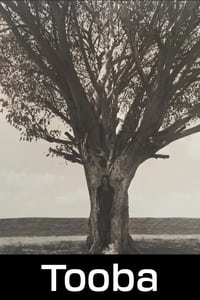

Her poetic two-channel video installation Tooba is based on the Koran, in which Tooba, the sacred tree of paradise, offers shelter and sustenance to those in need. Neshat's video places a woman within a groove in the trunk of a large fig tree, symbolising its soul. They stand, alone, in a stone-walled garden set in a mountainous landscape. Men and women draw near and enter the enclosure, seeking refuge, as the Tooba-woman disappears into the Tooba-tree. The piece is ambiguous. Who has agency? Is it the crowd, who 'invade' the garden or the tree-woman who draws them towards her like a magnet? Tooba is dedicated to Iranian writer Shahrnush Parsipour, whose novel Women without Men concerns five women sojourning in a garden, one of whom is transformed into a tree.

